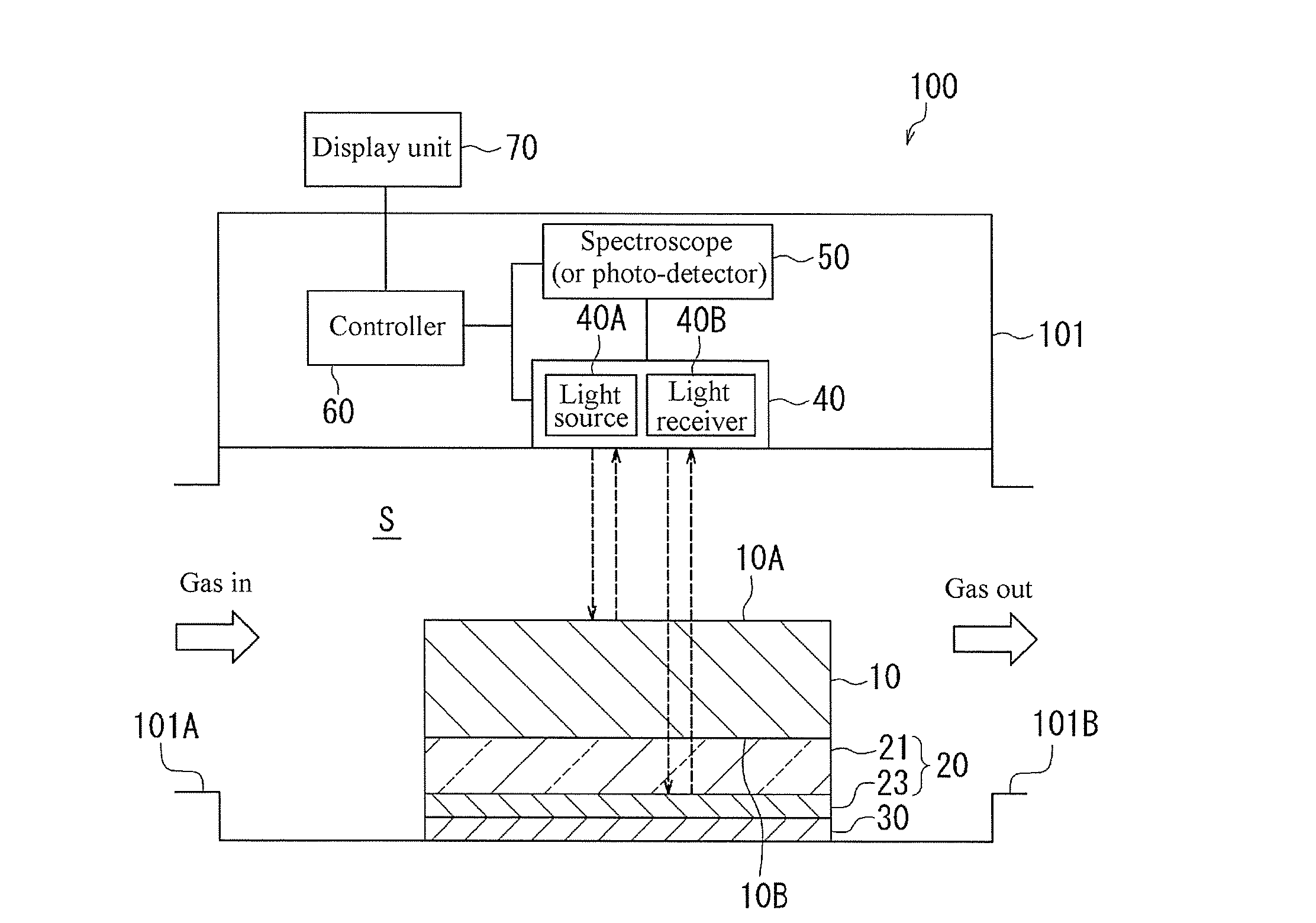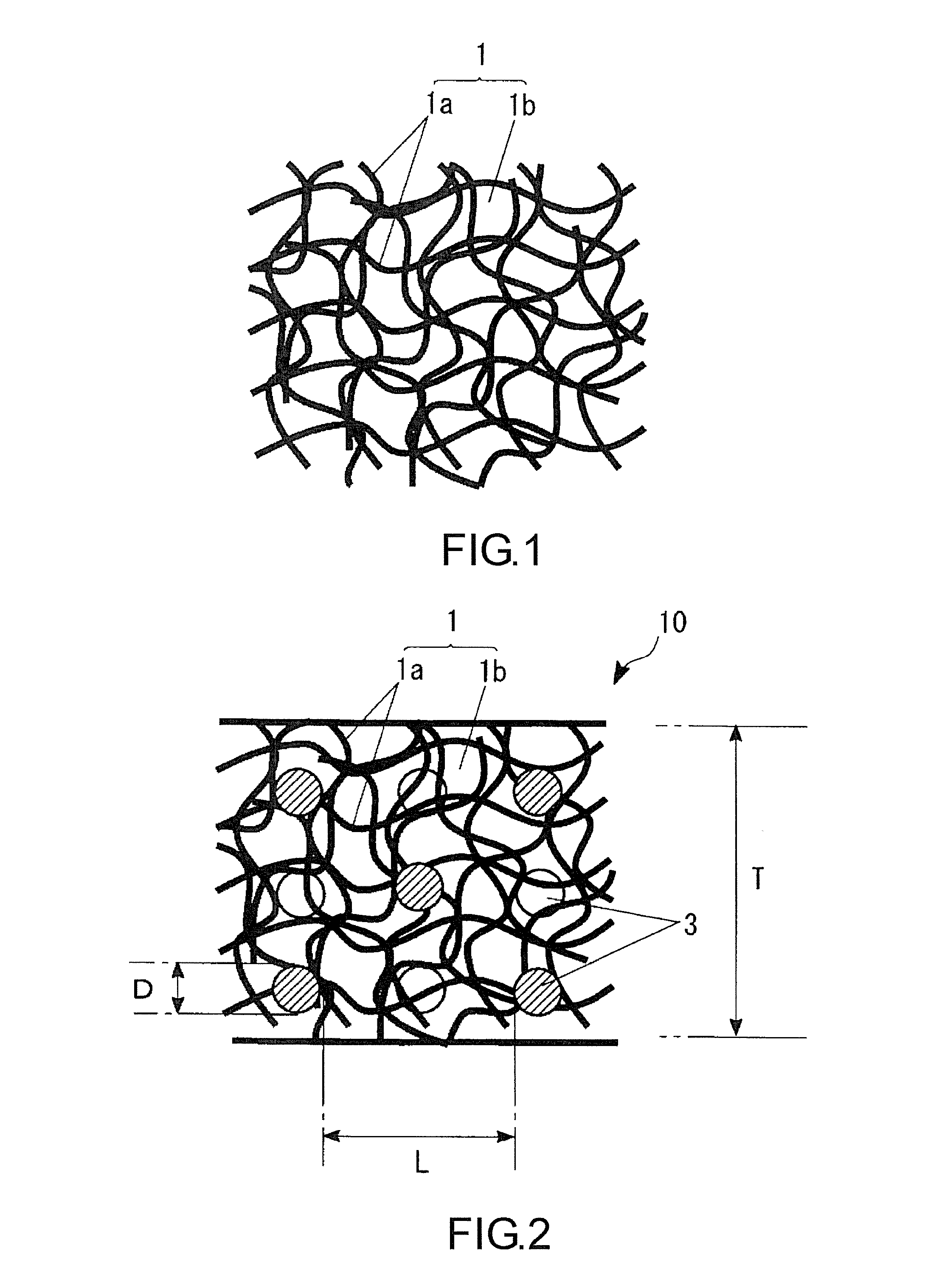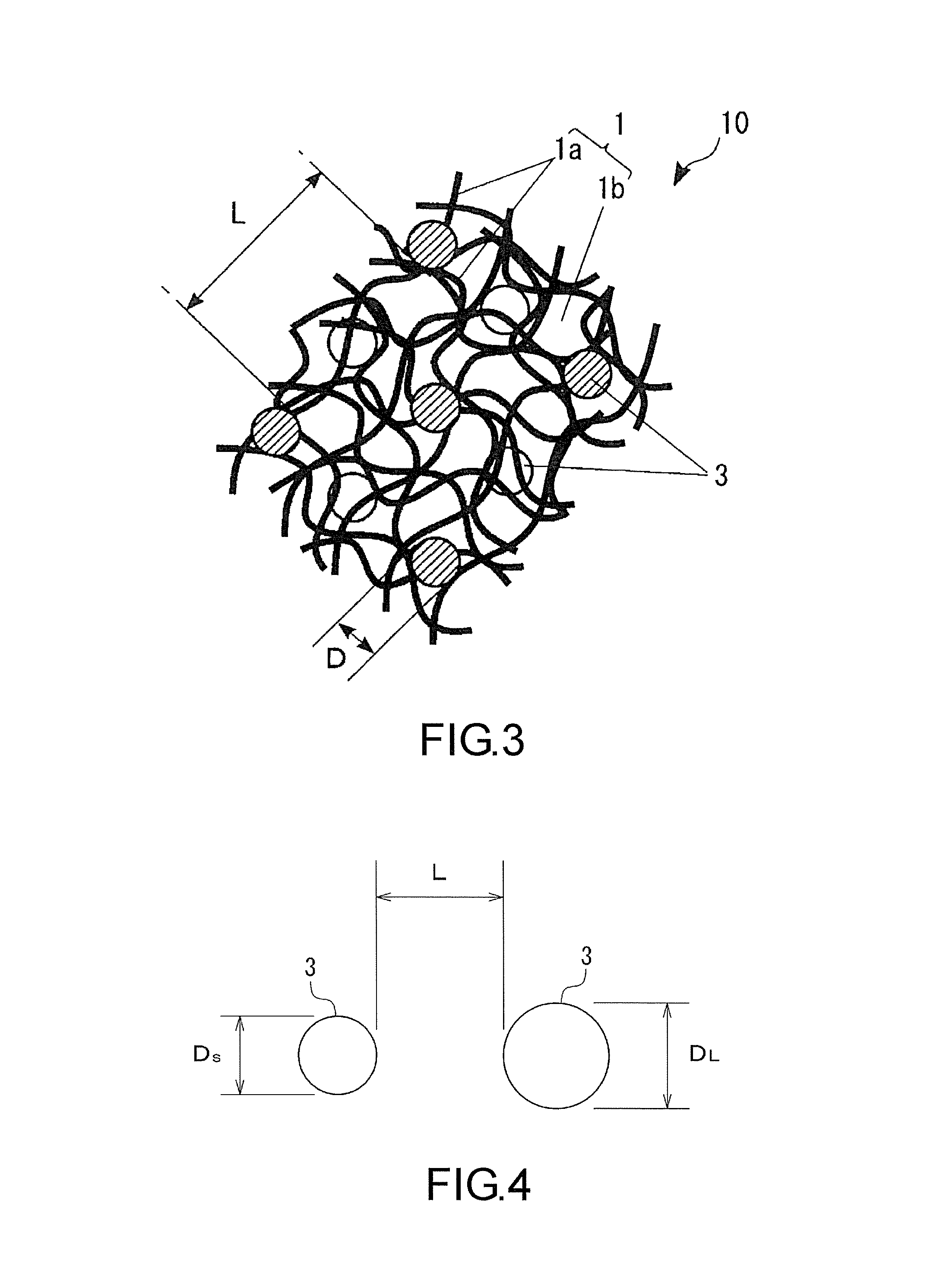Sensor element, dew condensation sensor, humidity sensor, method for detecting dew condensation, and dew-point measurement device
a technology of dew condensation and sensor element, which is applied in the direction of instruments, porous material analysis, and investigation of moving fluid/granular solids, etc., can solve the problems of inability to predict the occurrence of dew condensation in time, the dew point meter cannot sense the occurrence of dew condensation in advance, and the dew point is easy to be confused with the dew point, etc., to achieve the effect of short time, good precision and simple operation
- Summary
- Abstract
- Description
- Claims
- Application Information
AI Technical Summary
Benefits of technology
Problems solved by technology
Method used
Image
Examples
first embodiment
Dew Condensation Sensor
[0128]Next, a dew condensation sensor according to the first embodiment of the sensor element of the invention is described with reference to FIGS. 5 to 9. FIG. 5 illustrates a schematic configuration of a dew condensation sensor 100 according to an embodiment of the invention. The dew condensation sensor 100 includes a nano-composite 10, a light reflective member 20 disposed on one side of the nano-composite 10, a protection layer 30 laminated on the light reflective member 20, a light source / light receiver 40 disposed facing the nano-composite 10, a spectroscope (or photo-detector) 50 detecting light reflected by the light source / light receiver 40, a controller 60 connected to the light source / light receiver 40 and the spectroscope (or photo-detector) 50 and used for overall control thereof, and a display unit 70 connected to the controller 60. In the dew condensation sensor 100, the nano-composite 10, the light reflective member 20 and the protection layer ...
example 1
Fabrication of Nano-Composite
[0176]To 6 g of a boehmite powder (trade name: C-01, produced by Taimei Chemicals Co., Ltd, with a mean particle diameter of 0.1 μm and a cubic particle shape), 17 g of water and 0.5 g of acetic acid were added, and a 5-min ultrasonic treatment was performed. Further, 17 g of ethanol, 0.6 g of 3-aminopropyltriethoxysilane and 1.25 g of chloroauric acid tetrahydrate were added, followed by a 5-min ultrasonic treatment, thereby preparing a gold complex-containing slurry 1. The proportion of Au in the gold complex-containing slurry 1 at this moment was 10 weight parts relative to 100 weight parts of boehmite. Next, the resulting gold complex-containing slurry 1 was coated on a glass face of a substrate (12 cm square) having a three-layer structure of Ni—Cr alloy film of 193 nm thick / Ag film of 233 nm thick / glass substrate of 0.7 mm thick using a spin coater (trade name: Spincoater 1H-DX2, made by Mikasa Co., Ltd.), dried at 70° C. for 3 minutes and at 130° ...
example 2
[0184]Except that the cooling speed was set to 1.0° C. / min, the cooling properties were evaluated in the same manner as in Example 1. The standard deviation G of the absorption peak wavelength from 25° C. to 15° C. was 0.113 nm, and the mean value ν of the absorption peak wavelength was 569.794 nm. When the temperature of the surface of the nano-composite 1 reached 10.6° C., the absorption peak wavelength was shifted to the longer-wavelength side in excess of σ±3σ. In addition, as the surface temperature of the nano-composite 1 reached 8.6° C., the absorption peak wavelength and reflected-light intensity at the wavelength of 700 nm rapidly varied with 8.6° C. as the inflection point. From the above, it was confirmed that the nano-composite 1 is capable of detecting dew condensation at a temperature higher than the dew point (4.50±0.07° C.) measured using the minor-cooling dew point meter.
PUM
| Property | Measurement | Unit |
|---|---|---|
| particle diameters | aaaaa | aaaaa |
| particle diameters | aaaaa | aaaaa |
| volume fraction | aaaaa | aaaaa |
Abstract
Description
Claims
Application Information
 Login to View More
Login to View More - R&D
- Intellectual Property
- Life Sciences
- Materials
- Tech Scout
- Unparalleled Data Quality
- Higher Quality Content
- 60% Fewer Hallucinations
Browse by: Latest US Patents, China's latest patents, Technical Efficacy Thesaurus, Application Domain, Technology Topic, Popular Technical Reports.
© 2025 PatSnap. All rights reserved.Legal|Privacy policy|Modern Slavery Act Transparency Statement|Sitemap|About US| Contact US: help@patsnap.com



